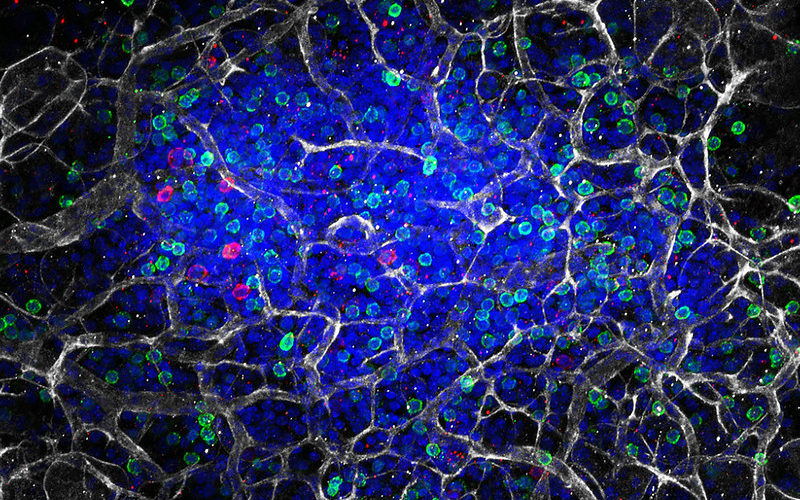The Importance of Fat

When one types the word “fat” into any online search engine, the internet presents a full list of almost threatening reasons why one should immediately consider losing weight. Incidentally, it provides seemingly magical remedies against obesity simultaneously, ranging from protein shakes and powders to strict diets and workout regimes. It comes as no big surprise that although advertising companies promise to improve your health first and foremost, the diet industry has gained an even larger net worth and influence on the stock market since the start of the pandemic.1
The multi-billion pound industry benefits from the public’s fear of weight gain and fat. But what exactly does fat do in the human body? And why are we so afraid of it?
Fat, or in more scientific terms, adipose tissue, is loose connective tissue made of various cell types (about a third of them being adipocytes). These cells store fat in the form of triglycerides2
. Fat can be categorised into three separate subgroups: white, brown, and beige adipose tissue. White fat, which is found underneath the skin and around the organs, makes up most of the fat found in the human body. It has been attributed with energy storage and releases power when needed, for example, during exercise.3
Brown fat, on the other hand, serves to generate heat by burning energy but only makes up around 1-2% of adult adipose tissue. Beige fat describes the presence of brown fat cells in white adipose tissue. As well as brown fat, this tissue also burns energy to generate heat, but the genetic makeup of beige cells differs from its brown counterpart4
These functions were once thought to be definitive. However, an increased interest in research surrounding fat tissue due to a rise in cases of morbid obesity has slightly turned the tables. The first significant breakthrough that shifted the perspective surrounding the function of fat away from this very two-dimensional understanding was the discovery of the leptin hormone. This hormone is responsible for signalling satiation to the brain. Researchers found that fat cells secrete leptin into the bloodstream proportional to the amount of fat present; the more fat tissue in the body, the more leptin is released and, consequently, the farther hunger levels fall. Reversely, prolonged fasting decreases the amount of leptin in blood and hence makes one hungrier. Because of this significant impact leptin has on the metabolism, any changes to this system such as fasting or genetic mutations can cause hormonal imbalances that, especially in the case of mutations, can have adverse health implications such as obesity.5
However, leptin is only the tip of the iceberg. Many other hormones secreted by adipose tissue, also known as adipokines, have since been discovered. The current scientific consensus agrees that fat is not just a depot for energy, but instead functions as a metabolically active, endocrine organ6
This means that chemical reactions take place in fat cells that partly contribute to hormone secretion into the blood. It turns out though that these hormones are only a fraction of what fat cells have in store; they can also secrete proteins and even genetic material, meaning they can influence various other reaction pathways. In return, they can also receive signals from their surroundings. For instance, fat cells respond to cortisol (a hormone crucial for the body’s response to stress) and insulin. The latter is critical for the body’s ability to balance blood sugar levels.
All these properties enable adipose tissue to influence many vital functions of the human body. But this means that when fat cells are dysfunctional, the effects can be detrimental to physical health. The general public associates adipose tissue swiftly with illnesses such as diabetes and cardiovascular disease, and it has been proven that many diseases, including 13 different cancers, are linked to obesity.7
It is important to note though, as seen with mutations linked to leptin, that underlying causes for these health complications are not just diet and exercise. These causes are incredibly complex, varied, and depend on genetics, hormones, as well as lifestyle and environmental factors (not having yet considered underlying socio-economic reasons). Additionally, current research implicates that the distribution of fat is actually more important than the amount in the body, which is why there is a distinction to be made between metabolically healthy body fat percentage distribution and unhealthy obesity. The latter is characterised by properties such as insulin resistance and high levels of inflammation, whereas with healthy body fat distribution, where most of the fat is located under the skin, these features are lacking. This shows that health related to body fat percentage is dependent on the individual’s specific circumstances.8
Yet, one thing is important to keep in mind: research surrounding fat tissue is far from complete. There are so many chemical pathways linked to fat that have yet to be understood, and their full discovery will raise more questions around the importance of fat in the human body. A crucial factor in gaining a better understanding in adipose tissue is to diversify which experimental subjects future theses will be tested on. For example, most research thus far was conducted on male mice, even though it is known that fat functions differently in male and female organisms.9
So far, what we are certain about is that well-functioning fat tissue is essential for our health and functional metabolism. Therefore, next time the internet offers quick solutions to “improve” your body fat percentage in a few short weeks, remember that this organ is too complicated for it to be “fixed” simply by drinking an overpriced detox tea.
This article was specialist edited by Siobhan McGeechan and copy-edited by Evita Muller
References
- https://nypost.com/2020/12/28/the-diet-industry-is-getting-fat-off-the-pandemic/
- http://www.sdcollegemzn.com/e-content/e-content/200516/1.pdf
- https://www.cambridge.org/core/journals/proceedings-of-the-nutrition-society/article/physiological-role-of-adipose-tissue-white-adipose-tissue-as-an-endocrine-and-secretory-organ/6F914782A23DBDEC3E582833F6A16717
- https://www.ncbi.nlm.nih.gov/pmc/articles/PMC7052117/
- https://royalsocietypublishing.org/doi/10.1098/rsob.200291#d1e814
- https://pubmed.ncbi.nlm.nih.gov/15181022/
- https://royalsocietypublishing.org/doi/10.1098/rsob.200291
- https://www.ncbi.nlm.nih.gov/pmc/articles/PMC7052117/
- https://royalsocietypublishing.org/doi/10.1098/rsob.200291#d1e222










